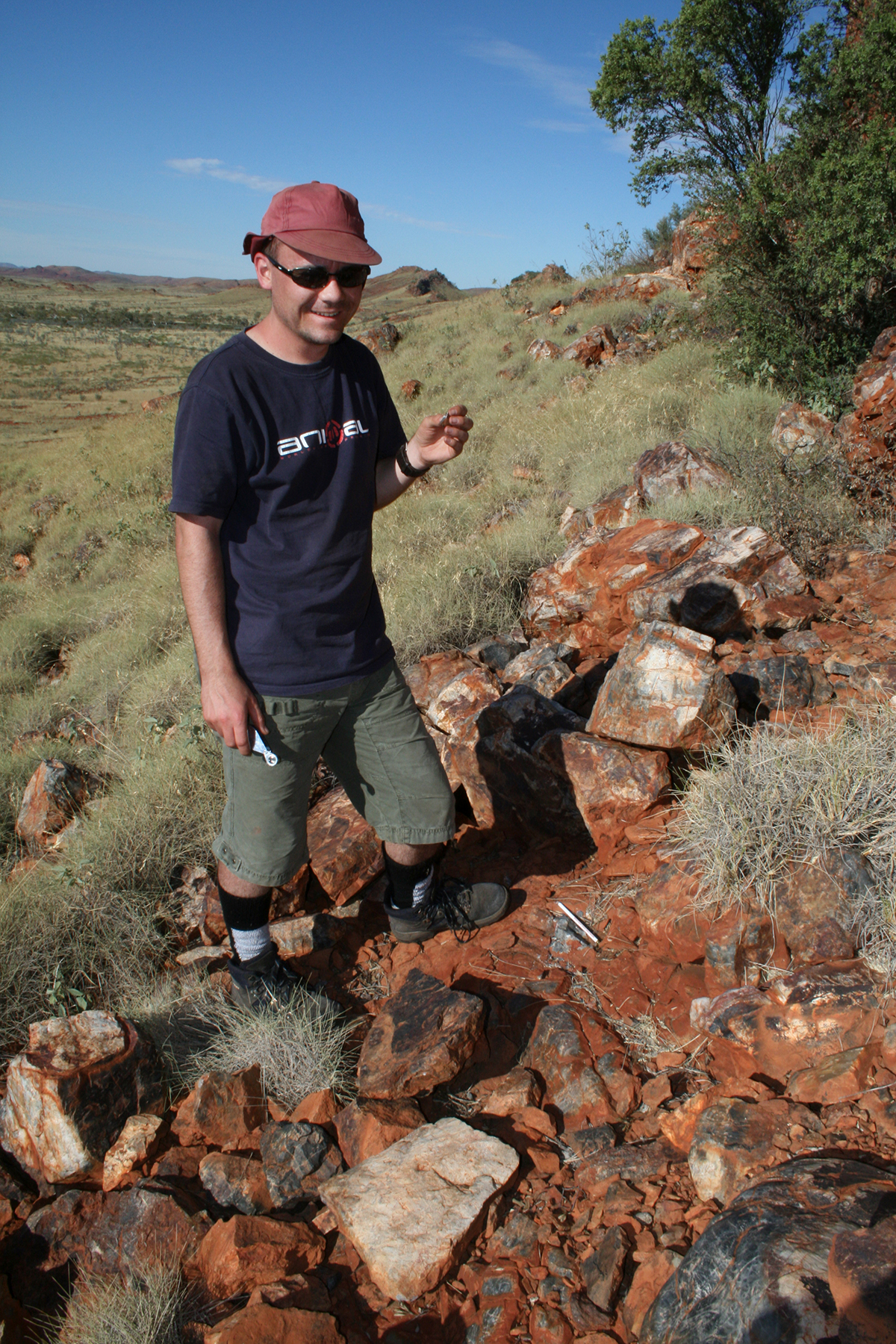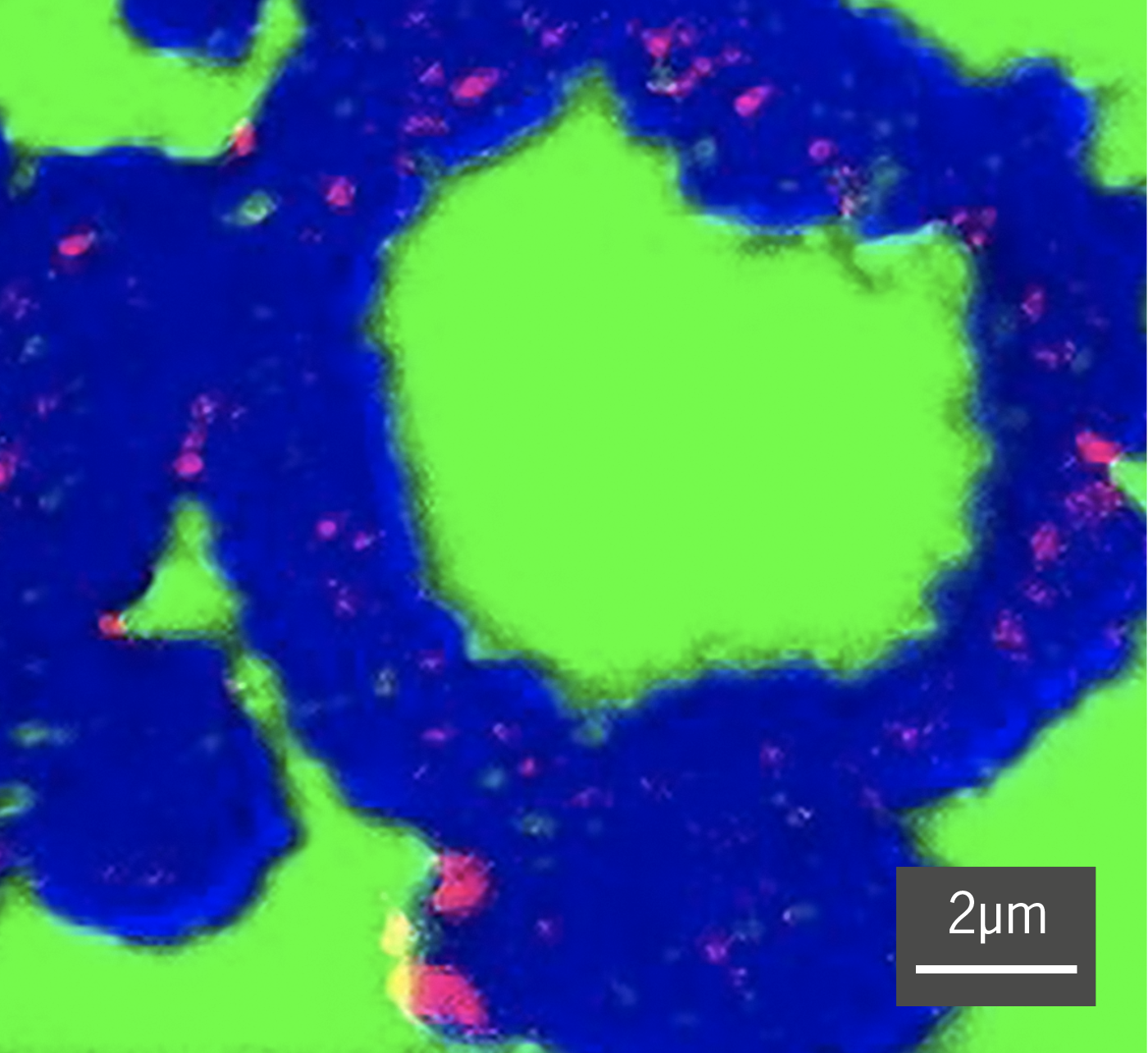2014 Future Fellow, Dr David Wacey, has used the ion probes extensively over many years to amass a significant body of work revealing the nature of some of the earliest life on Earth.

Dr David Wacey in the field.
When did life first appear on Earth, what form did it take and how can we recognise life on other planets? These are the big questions that interest Dr Wacey. The earliest life on Earth would have been very small, morphologically simple and probably only subtly different from co-occurring non-biological organic material. Fortunately, AMMRF (now Microscopy Australia) instrumentation gives researchers a fighting chance to determine what is and what is not ancient fossilised life.

NanoSIMS ion image of a 1900 million-year-old pyritic Huroniospora microfossil: sulfur is blue; oxygen, representing quartz, is green; and nitrogen, pink. The discontinuous ring of nitrogen is interpreted as a chemical ghost of the original organic microfossil wall.
The UWA flagship has enabled Dr Wacey to collect unique in-situ elemental and isotopic data from rock samples up to 3.5 billion years old. This allows the precise ageing of the rocks and lets him associate the position of elements associated with life, such as carbon and nitrogen, with sulfur and structural features of potential fossils.
Ultrathin slices from potential microfossils were prepared so cell-wall microstructure and nanoscale chemistry could be studied by transmission electron microscopy, complementing the ion probe results. The flagship focused-ion beam instruments at the University of Adelaide and the University of New South Wales were used for this precision work. Accurate 3D models of the microbial fossils were also constructed using serial sectioning.
November 21, 2014